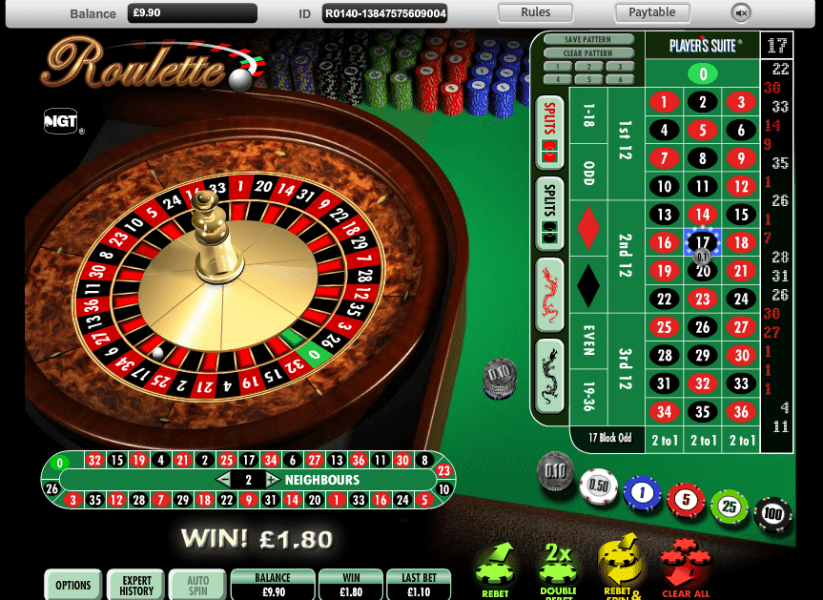

The game has been played in its present form since as early as 1796 in Paris. A primitive form of roulette, known as 'EO' (Even/Odd), was played in England in the late 18th century using a gaming wheel similar to that used in roulette. The roulette mechanism is a hybrid of a gaming wheel invented in 1720 and the Italian game Biribi. Many historians believe Blaise Pascal introduced a primitive form of roulette in the 17th century in his search for a perpetual motion machine. The first form of roulette was devised in 18th century France. The winnings are then paid to anyone who has placed a successful bet. The ball eventually loses momentum, passes through an area of deflectors, and falls onto the wheel and into one of thirty-seven (single-zero, French or European style roulette) or thirty-eight (double-zero, American style roulette) or thirty-nine (triple-zero, "Sands Roulette") colored and numbered pockets on the wheel.

To determine the winning number, a croupier spins a wheel in one direction, then spins a ball in the opposite direction around a tilted circular track running around the outer edge of the wheel. In the game, a player may choose to place a bet on a single number, various groupings of numbers, the color red or black, whether the number is odd or even, or if the numbers are high (19–36) or low (1–18). Roulette is a casino game named after the French word meaning little wheel which was likely developed from the Italian game Biribi. "Gwendolen at the roulette table" – 1910 illustration to George Eliot's " Daniel Deronda".


 0 kommentar(er)
0 kommentar(er)
